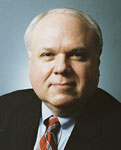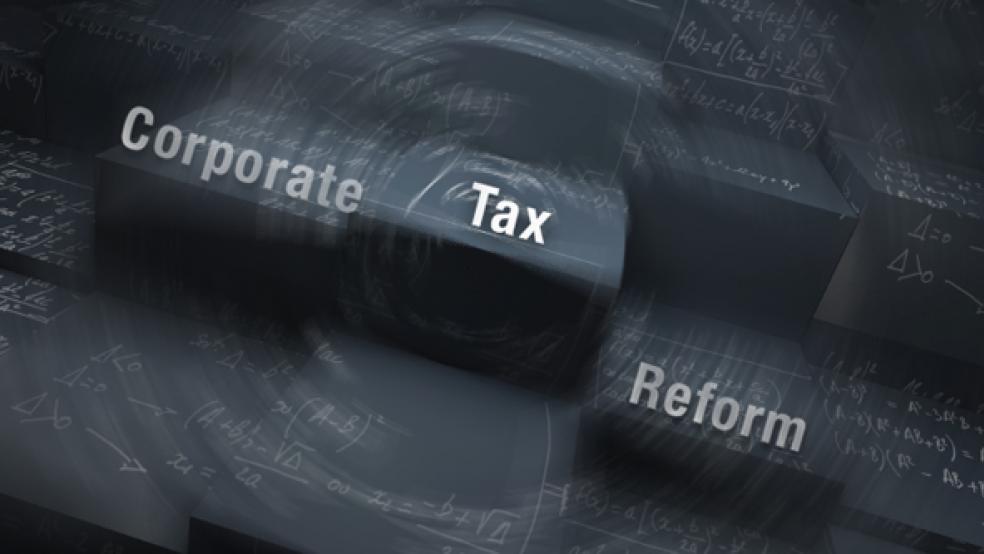There is a very well-financed campaign underway by several business organizations to lower the federal corporate tax rate. They sometimes use misleading arguments to make it seem as if corporations are grossly overtaxed, when in fact the United States corporate tax burden is far from excessive.

One of the principal groups pushing for corporate tax cuts is called RATE, which stands for reforming America’s taxes equitably. Its members are among the largest and most profitable corporations in the country.
On July 1, Politico reported that RATE had commissioned a poll that found varying levels of support for cutting corporate taxes depending on how the question was framed.
One question just asked people whether they favor lowering the corporate tax rate with no offset in terms of closing loopholes. Only 34 percent of people supported the idea, with 46 percent opposed.
Oddly, support for corporate tax cuts rose when people were asked specifically about cutting the corporate tax rate to 25 percent from 35 percent. That idea is supported by 46 percent of people, with 43 percent opposed.
I suspect that the reason is that most people have no idea what the corporate tax rate is and 35 percent sounds high even though the top statutory tax rate on individuals is higher at 39.6 percent. Also, they may not understand what the term “tax rate” means, thinking it means the effective rate (taxes divided by profits) rather than the statutory rate without adjustment for deductions, exemptions and credits.
Support was strongest for simply closing loopholes and exemptions in the tax code, which is supported by 73 percent of people, with only 13 percent opposed. This response could be interpreted as support for raising corporate taxes since the loophole closing is not coupled with a corporate rate reduction.
The fourth question married rate reduction with loophole closing so as to maintain the same level of revenues, with no rate mentioned. This is the reform most often discussed in Washington. It is supported by 52 percent of people, with 25 percent opposed.
The fifth question asked people if they support a flat rate tax for corporations, which would increase taxes for some corporations and lower them for others. This idea is supported by 63 percent of people, with just 18 percent opposed.
However, this question is somewhat disingenuous because the corporate tax schedule is relatively flat already in practice. Although statutory corporate rates vary between 15 percent and 39 percent, the vast bulk of corporate income is earned by large corporations paying a flat rate of 35 percent.
Finally, the RATE poll asked people if they support lowering the corporate tax rate to 25 percent combined with closing loopholes, presumably in a revenue-neutral manner. This idea is supported by 57 percent of people, with 28 percent opposed.
Interestingly, the poll asked people what they think the corporate tax rate is, meaning the statutory rate. Only 12 percent correctly said the rate is 35 percent, with 77 percent saying it is lower and 11 percent saying it is higher.
Leaving aside the question of whether this question was asked before or after those above, which told people the rate is 35 percent, it is not clear whether people knew whether the question referred to statutory or effective rates. This is important because, just as with individuals, various special provisions of the tax code lower the actual rates corporations pay well below the statutory rate.
On July 1, the U.S. Government Accountability Office published a report examining the difference in effective tax rates among corporations. It found that profitable American corporations paid an average effective tax rate of just 13 percent. Inclusion of state, local and foreign taxes raised that percentage to about 17 percent. Both rates are far below the approximate 40 percent combined federal, state and local statutory rate.
This means that the effective corporate tax rate is less than the effective federal tax rate on households earning as little as $40,000. According to the Tax Policy Center, the total federal tax rate, including the payroll tax, on households with between $40,000 and $50,000 of income is 13.8 percent this year.
Of course, federal taxes also apply to corporate profits paid out to its owners, the shareholders. In effect, this is a double tax on the same income. But since 2003, the top tax rate on dividends received has been significantly lower than that on wages and other forms of income. It is now just 20 percent.
In 2003, the Bush administration argued that the total tax rate on corporate income is what matters for economic growth. It could have proposed cutting the corporate tax rate at that time or allowing corporations a partial deduction for dividends paid, as other countries do, but rejected those options. Presumably, the Bush administration must have thought that cutting the corporate tax rate would have had less impact on growth than cutting the rate on dividends received.
If that was the Bush administration’s view, it may have had a point. According to research by economist Thomas L. Hungerford of the Economic Policy Institute, there is no evidence in the data since 1947 that the corporate tax rate affects economic growth. This conclusion is disputed by conservative tax analysts, but as I have pointed out previously, there is no evidence that cutting the tax on dividends had any impact whatsoever on economic growth.
There is a good case to be made for cutting the statutory corporate tax rate if it is honestly paid for by eliminating tax expenditures. But it’s not the slam-dunk that corporate lobbyists would have us believe.






